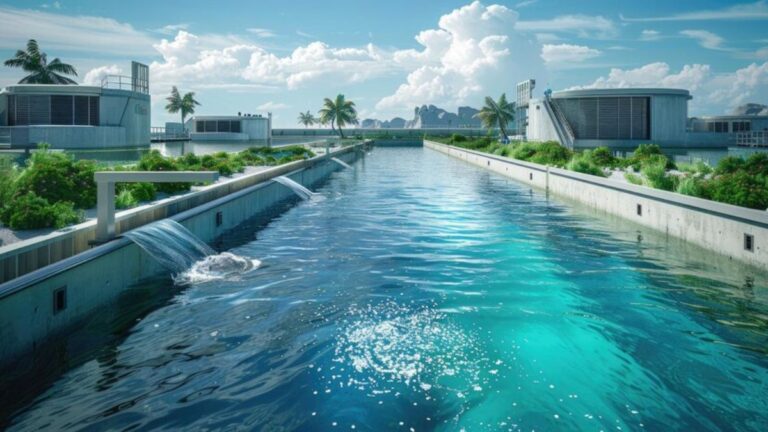Sustainable wastewater treatment methods include advanced filtration, biological processes, and chemical treatments to remove contaminants. These innovative approaches reduce environmental impact, conserve water, and improve efficiency. Techniques such as constructed wetlands, membrane bioreactors, and nutrient recovery systems are crucial in promoting eco-friendly wastewater management practices.
Introduction to Sustainable Wastewater Treatment
Globally, the need for sustainable wastewater treatment has never been more critical. As populations grow and industrial activities expand, the demand for effective methods to treat wastewater sustainably becomes paramount. Key to these efforts is the development of innovative wastewater testing methods that ensure treated water meets safety and environmental standards.
These techniques are essential for managing the current situation and safeguarding our water supplies for coming generations. By implementing advanced treatment technologies, we can significantly reduce the pollutants that make their way into natural water bodies. By comprehending and utilizing various treatment techniques, the efficiency and efficacy of wastewater treatment systems may be significantly increased, making them more economical and sustainable.
Biological Treatment Methods
Biological treatment is one of the most ecologically beneficial methods of treating wastewater. It leverages the power of microorganisms to break down contaminants. For example, naturally occurring bacteria are used in activated sludge processes to treat organic material. This practical and sustainable method makes it popular for many treatment plants that aim to minimize their environmental footprint.
Additionally, biofilms and bioreactors are gaining traction in treating wastewater. Biofilms are microbial colonies adhered to surfaces, and bioreactors, which provide a controlled environment for these microorganisms, offer efficient ways to degrade organic matter. These systems can be fine-tuned to enhance the breakdown of specific pollutants, making them versatile tools for various types of wastewater. The introduction of genetically engineered microorganisms specifically designed to degrade harmful contaminants is also emerging as a futuristic approach to biological treatment.
Chemical Treatment Solutions
Chemical treatment involves adding chemicals to wastewater to trigger reactions that remove contaminants. Common chemicals used include chlorine, ozone, and hydrogen peroxide. These methods can be highly effective but come with their own challenges, like managing by-products and residual chemicals. Thus, an ongoing effort in chemical treatment focuses on finding more eco-friendly chemicals and optimizing their use.
For instance, chemical coagulation and flocculation are techniques where chemicals are added to wastewater to clump contaminants together, making them easier to remove. These chemical reactions are essential in treating various types of industrial wastewater that may contain heavy metals and other hazardous materials. Researchers are constantly working to recycle used chemicals in treatment, making the operation more circular and sustainable. Advanced oxidation processes (AOPs) are another promising area, offering powerful tools to degrade even the most stubborn contaminants.
Physical Treatment Techniques
Physical treatment techniques, such as filtration and sedimentation, physically remove particles from wastewater. These methods often serve as pre-treatment steps before applying biological or chemical treatments. According to the ScienceDirect library, physical methods are crucial for removing large solids to prevent downstream processing issues.
In practice, techniques such as membrane filtration and sand filtration play vital roles in segregating pollutants from water. These methods provide an initial cleaning stage that enhances the efficiency of subsequent treatment processes. Membrane technology, in particular, has seen significant advancements, with developments in materials science leading to more robust and effective membranes that can handle a higher load of contaminants. When integrated with modern design principles, Sedimentation tanks can more effectively facilitate the settling of particulates, making the subsequent chemical and biological treatments more efficient.
Integrated Treatment Processes
Many modern wastewater treatment plants use integrated processes that combine biological, chemical, and physical methods. This holistic approach ensures more effective treatment and compliance with stringent environmental standards. For instance, combining membrane filtration with activated sludge processes can enhance overall efficiency and considerably reduce treatment time.
The integration of various methods allows for the treatment of complex wastewater streams that might contain a variety of pollutants. This multi-barrier approach can significantly improve the quality of the treated water, making it suitable for various non-potable and even potable reuse applications. In addition to improving water quality, integrated systems are often more resilient and capable of handling fluctuations in wastewater composition than systems relying on a single method. These systems are precious for industries that produce highly variable wastewater, such as pharmaceuticals and food processing.
Real-World Applications
Various global projects demonstrate real-world applications of these innovative methods. For example, Singapore has implemented a large-scale integrated wastewater treatment system that greatly improves water reclamation efficiency. Such pioneering projects showcase the potential of innovative methods in achieving sustainability and are often cited as benchmarks for other cities looking to upgrade their wastewater management infrastructure.
Another example is the Zero Liquid Discharge (ZLD) project, where all wastewater is treated and reused, leaving zero discharge into the environment. This method is being implemented in various industrial sectors to respond to tighter environmental regulations and the need for sustainable water management. These projects frequently use a mix of physical, chemical, and biological processes throughout several treatment phases to provide the best possible treated water quality. The successful completion of such projects demonstrates the feasibility of attaining near-perfect water reclamation and highlights the need for continued innovation in this field.
Future Trends in Wastewater Management
Significant developments in wastewater treatment will occur in the future. New technologies like IoT and AI will completely change how treatment plants function. For instance, AI-driven analytics can optimize treatment processes, reduce energy consumption, and improve treatment outcomes by providing real-time data and actionable insights.
Moreover, innovations in renewable energy usage within wastewater treatment plants are rising. Utilizing biogas produced during anaerobic digestion as an energy source is an excellent example of transforming waste into a valuable resource, further promoting sustainability in wastewater treatment. Another growing trend is the development of decentralized treatment systems, which can operate independently of central facilities and offer flexible solutions for remote or rapidly developing areas.
